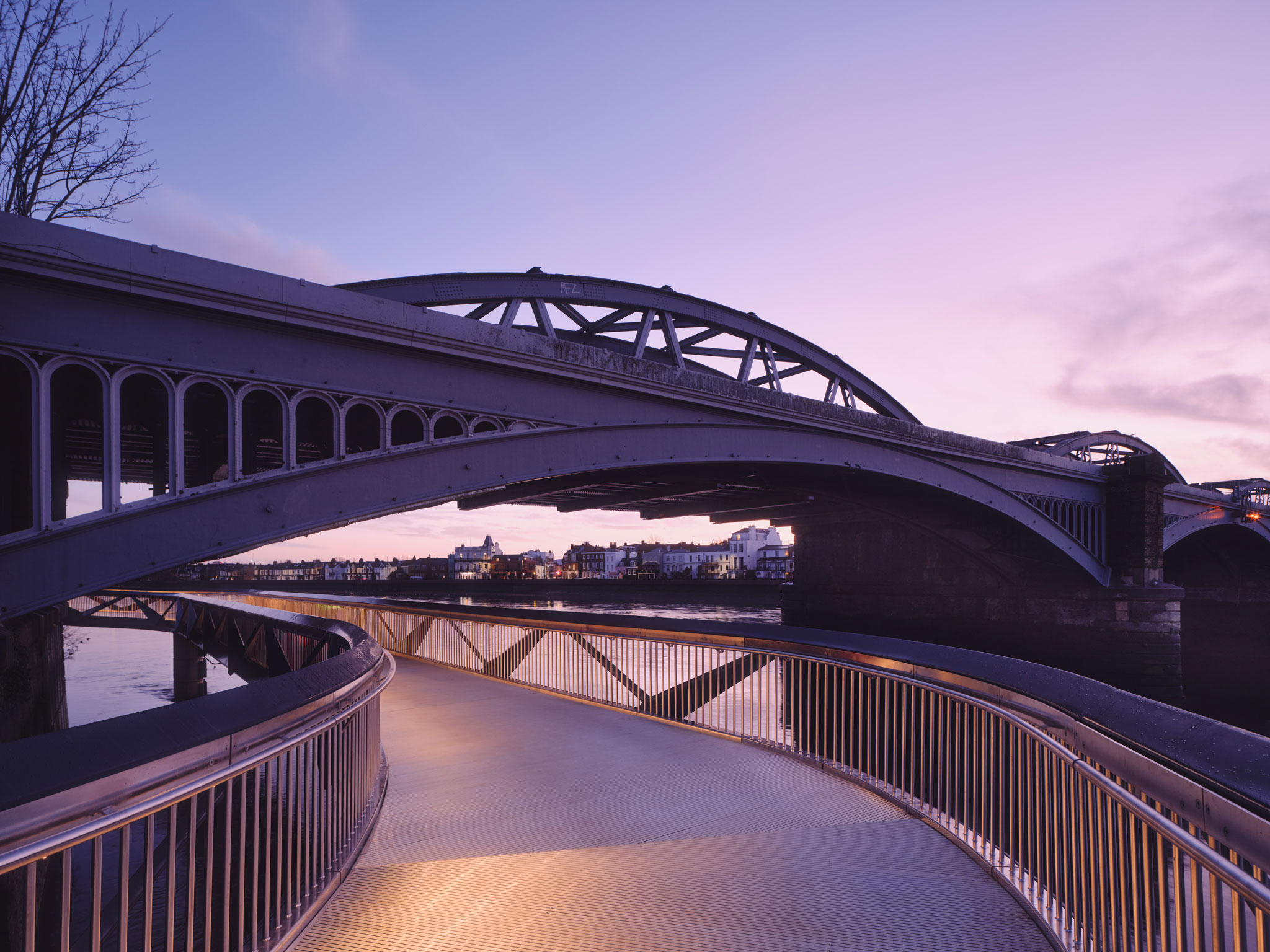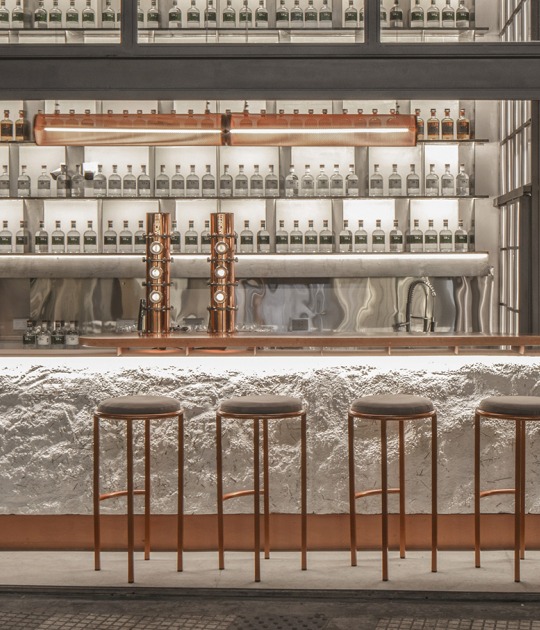
Dukes Meadow Footbridge under Barnes Bridge. Photograph by Aerial Essex.
Utilising off-site prefabrication in Tilbury, Essex, as well as the river itself for the transportation and installation of the bridge sections, an overall aim has been to reduce environmental impacts and carbon emissions during construction. Energy-efficient lighting was designed to protect the fragile ecosystem within Dukes Hollow. With robust finishes in stainless steel and aluminium, the structure anticipates future flooding and reduces the maintenance required over its expected 100+ year lifetime.
The structure designed by Moxon Architects is a ‘half through’ truss form with distinctive bracing members angled to maximise oblique views to the river. Estimates using COWI’s CO2e tool show innovation in material specification and construction technique between design and completion have enabled a 50% reduction of carbon emissions associated with the trusses, and a 30% reduction in the footbridge’s overall carbon footprint.

Dukes Meadow Footbridge under Barnes Bridge. Photograph by Simon Kennedy.

Dukes Meadow Footbridge under Barnes Bridge. Photograph by Simon Kennedy.
The meandering alignment of the trusses facilitates views up and downstream, as well as into the adjacent Dukes Hollow nature reserve - one of the few remaining natural tidal habitats in London. In addition to linking the Thames Path and providing access to the adjacent sports grounds and rowing clubs, the design also respects surrounding ecology by carefully integrating the structure into landscaped banks on either side of Barnes bridge. The open truss parapets that enable views from the bridge, also allow views through to the dense vegetation when seen from the Barnes side of the river. The 115m long structure is divided into four ambitiously slender spans that hug the shoreline, touching down on discrete piers that provide a minimal footprint within the tidal zone.

Dukes Meadow Footbridge under Barnes Bridge. Photograph by Simon Kennedy.









































